-
Content Count
452 -
Joined
-
Last visited
-
Days Won
23
Content Type
Profiles
Forums
Gallery
Calendar
Articles
Store
Posts posted by Soobz
-
-
Sadly they can't, because they can only go by what's printed by the manufacturer, which we know is largely inaccurate in AU.
-
In the interests of science I tried to measure some braids on a digital microscope. I don't think it's too accurate at measuring so don't take the numbers on face value, and I'm very new to this camera so it's not great imaging at these zooms, so, these are not under any significant tension which may affect diameter a bit. But here's some photos for ya.
white = Tasline 12lb, supposed to be 0.128mm
yellow = Sufix 832 8lb, supposed to be 0.18mm
green = Sufix 832 30lb, supposed to be 0.29mm
silver = 0.35mm solder. I put this in as a ref because it was measurable by calipers and was 0.36mm on Moore and Wright (good brand)I also calibrated the camera manually for some measurements using 0.25mm on the calipers.
Yellow text is hard to read on some sorry, so I'll type underneath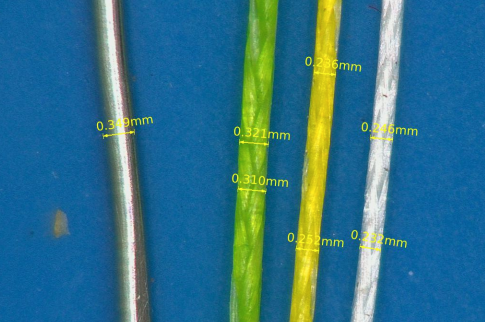
50x zoom, manual cal, 0.349 = solder, 0.321/0.310,0.236/0.252,0.246/0.252
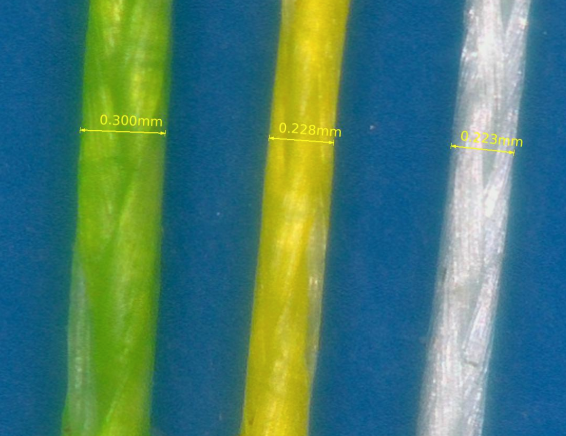
132x zoom, 0.300, 0.228, 0.223
I think all I can really take from this is 8lb Sufix 832 is pretty much the same size as Tasline 12lb, which makes sense since Tasline say theirs really is more like 20.6lb and Sufix EU say theirs is more like 26lb. BTW the 0.3mm 832 is 50lb in the EU. And as much as I know the measurements aren't accurate I reckon Tasline might be taking the piss with .128mm, but I did fit 300m on my Vanford 2500 so then again it's under 0.18
- yellow door 1 and Wert
-
 2
2
-
59 minutes ago, yellow door 1 said:
There used to be an independent line tester called PAULUS - his results used to be freely available online but I can find them anymore.
Yeah, his site is up but not showing the results. But you can see the archived versions ,they are out of date and are missing some of the modern favourites. Also he was sloppy with filling out the table accurately, eg. .he says Sufix 6lb is 1.8mm, he probably means .18mm but that's Sufix 8lb - which he tested at 24lb but measures it at .22m (I get .18 on my 8lb which is it's spec) and the 6lb should be 0.13mm, so I do wonder how he came up with his numbers.
-
That's the thing, the knot strength is usually way less than the braid strength. FWIW, I've broken 20lb FC rock at the clinch knot before I broke the alberto braid/FC knot with 0.128mm braid, but that's a tiny sample size. The thing is that's trying to un-snag, I look forward to a fish that I can do that with :).
-
I keep having to look this up so I thought I'd produce a guide I can refer back to, and maybe it helps others.
Many would know braid labelled strength vs diameter is all over the place in AU, with seemingly no consistency.
The reason for this is the US market decided they would label braid based on the mono equivalent size rather than it's true breaking strength, except they didn't really do that and it's a seemingly meaningless number. In Europe they generally label with the actual breaking strain. Australia seems to have gotten a mishmash.
eg. JBraid x8 0.13mm (from the labels)
EU = 8kg
AU = 3.8kg/8lb
US = 8lb
All of them are made in Japan, same factory, why is the EU one 2x stronger? Because it's not, they are all the same line. Also, 8lb mono would be more like 0.25mm, so it's not even like it's truly a mono equivalent number.I use Tasline for my Vanford 2000, their 12lb is 0.128mm (yeah right, like they can measure a non round braid to 0.001mm), and they state they expect it to break at 20.6lb or 9.3kg, so at least you get an idea of what it's really intended to hold. I have not had one single wind knot with that 'thin as hell miles casting line', unlike the JBraid that I've had a few with.
Here's the charts I use now, it's Tasline's numbers, they tie up with somewhat similar number to Sufix 832, JBraid and Kairiki - at least a hell of a lot closer than the AU labels.
Test 8 lb 12 lb 15 lb 20 lb 30 lb 40 lb 50 lb 60 lb 80 lb 100 lb Diameter in mm 0.115 0.128 0.163 0.225 0.299 0.317 0.332 0.422 0.48 0.545 PE Rating 0.5 0.6 1 1.7 3 3.5 4 6 8 10 Actual Average Break 14.2 lb 20.6 lb 23.7 lb 34.7 lb 49.0 lb 59.2 lb 78.5 lb 91.6 lb 116.2 lb 138.2 lb - PE 0.6 ………………………….. 0.128mm
- PE 0.8 ………………………….. 0.148mm
- PE 1 …………………………….. 0.165mm
- PE 1.2 ………………………….. 0.185mm
- PE 1.5 ………………………….. 0.205mm
- PE 1.7 ………………………….. 0.218mm
- PE 2 …………………………….. 0.235mm
- PE 2.5 ………………………….. 0.260mm
- PE 3 …………………………….. 0.285mm
- PE 3.5 ………………………….. 0.310mm
- PE 4 …………………………….. 0.330mm
- PE 5 …………………………….. 0.370mm
- PE 6 …………………………….. 0.405mm
- PE 7 …………………………….. 0.435mm
- PE 8 …………………………….. 0.470mm
- PE 10 …………………………… 0.520mm
-
16 hours ago, vogon said:
Hopefully the pics are clear enough.
LHS Nedrig 1/6 oz, RHS Headlockz 1/8 oz
Thanks, very interesting. In some ways the headlockz look more natural like a prawn defending itself.
-
I have a hate love relationship with Amazon
 . Someone at TT needs to explain why ordering 3 packs of Crawz shipped from Canada is more than 20% cheaper than buying in AU.
. Someone at TT needs to explain why ordering 3 packs of Crawz shipped from Canada is more than 20% cheaper than buying in AU.
This is interesting:
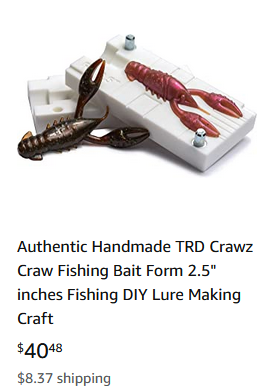
Though you need the same slightly buoyant SP mix for nedrig use.
-
4 hours ago, Softy said:
Different presentation with the nedrig. The head having a flat end makes it stand up on its end where as a normal head the plastic lays flat.
I reckon take the SP off and both are going to lie flat, especially with Nedlockz having weight down the shank, so I suspect it's the SP being slightly buoyant that makes it stand up. Would be curious to see a TRD craw on both jig heads in a glass of water if anyone has both on hand.
At the price and rarity of cockles, something else needs to work

-
The nedrig seems to be the go, but despite research I can't quite see why the nedrig jighead works any different. eg. surely the flat on the nedrig has little effect?
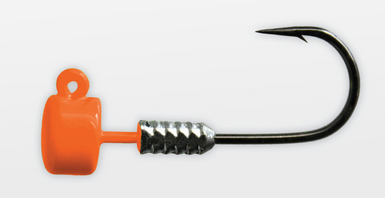
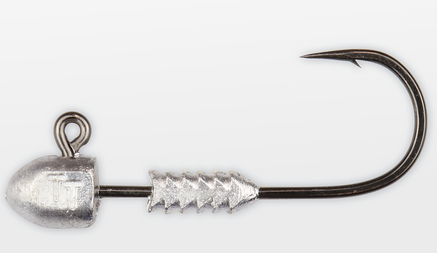
ie. why wouldn't any lighter jig head with smaller hook work exactly the same?
-
Saw Lubin have some luck on KGW with SPs but anyone else have any tips?
-
That last sign is a cracker
-
54 minutes ago, Richyd said:
Maybe it's best that I just go into a a store and ask- I always just wonder if schmucks like me get taken advantage of

Tackleworld Adelaide, Sportsfishing Scene Cavan, are generally good but does depend which salesperson you get. Also member @Kuerschie at BCF Richmond won't lead you astray. Honestly though, stick to a budget and reels these days are damned good even at the cheap end (well except for some of the really dodgy Chinese brands). You are mainly paying more for smoother, lighter, better sealing, durability, rather than functionality.
-
Really need to match it with a rod. At $150-200 there are some very good reels.
Penn Spinfisher VI for robust and well sealed
Daiwa Fuego a tad more refined but not as well sealed
At the cheaper end the Shimano Sedona might be worth a look.
Check out what this guy uses, he punishes reels:
https://www.youtube.com/c/EliasVFishing
-
Finding the brain/spinal column is the hard part on smaller fish
-
-
The sizes are not interchangeable in Australia, a Daiwa 2000 can be close to Shimano 1000. You have to compare capacity and weight, and well, just hold them.
If you want a small Sienna 1000 sized reel look at the Okuma Ceymar C-10, way better than the Sienna in quality terms and possibly a tad smaller, and just as cheap. Meppstas put me on to Okuma, I'd like to try more of their gear but not easy to find locally.
-
-
-
82 fines, $25k, so $300 per fine? Probably less, cos some would have gotten extra fines for running. Seems cheap to me at the cost of snapper.
-
Sure, but there's no weight saving or any other benefit I can see. Whilst less line is cheaper, some super cheap mono or 4 core braid as backing gives you options to use it for other tasks - yes that backing has weight but pretty low. Mind you, Abus idea of their high end reels giving you 2 spools, 1 low, 1 normal, is a winner.
-
-
I thought she be a bit on the plain side, and quite retro looking, not that looks matter too much. But, that does not appear to be the new model based on this
https://fish.shimano.com/ja-JP/product/reel/hanyouspinning/a075f000035yx1uqaa.html
It's a quite different reel all around, less capacity, higher gearing, more weight, another bearing, but specs mean nothing really.
For historical reference
 :
:
 Wonder if there's any serious discounting of the FB.
Wonder if there's any serious discounting of the FB.
-
Might not like metal as it might react with the acids or alkalis on their bodies. I know snails have that problem.
- Squid Inc. and doobie
-
 2
2
-
Bored in lockdown, so some brag posts showing me lurid lures (tm) landed fish.
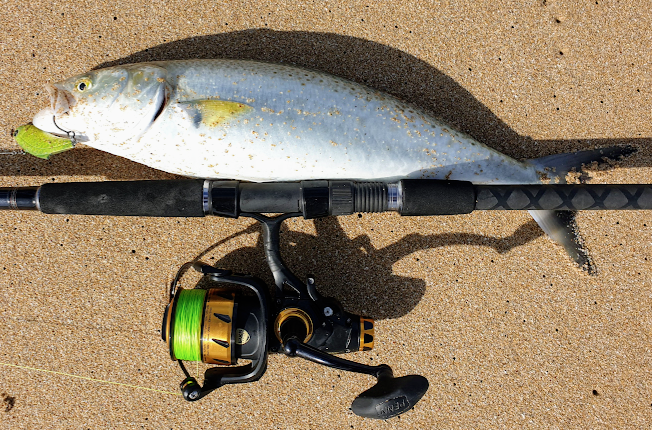
This is a nice vibe, I don't know if or what it's a ripoff of, but casts very well and vibrates really nice. Shit in weed though as the nose rakes it up. The pished pilly colour was lost to rocks.
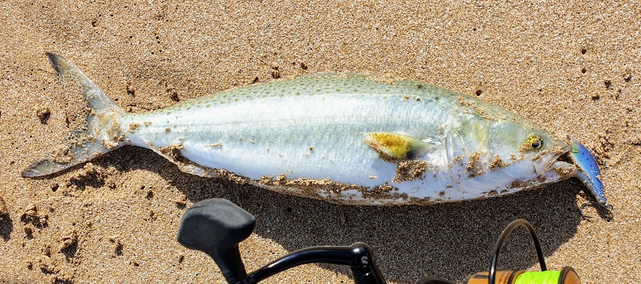
A bit less vibration on this guy, more suited to deeper water than the surf I think where you can teabag a bit and really work it.
Was really interesting that the fly rod laded bigger fish easier because the entire length of the rod is taking load compared to the top half of the spin rod, which was a 6-12kg medium heavy action.
Green lure is 88mm, blue is 72mm if you're trying to work out the salmon size. I didn't measure a single fish with was a tad stupid







$1200 Lure $1661 AUD
in Bait & Tackle
Posted
I'm willing to make one for half that price